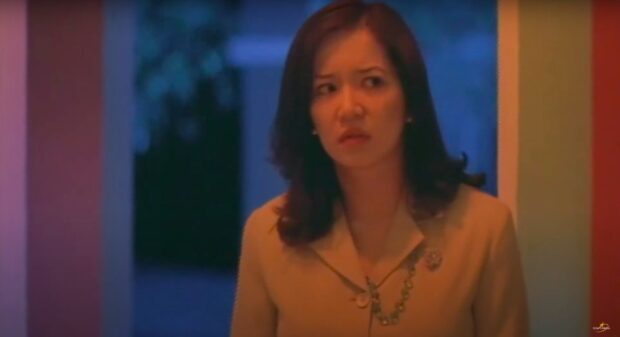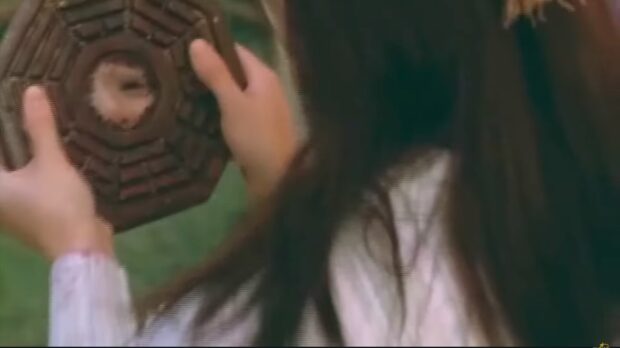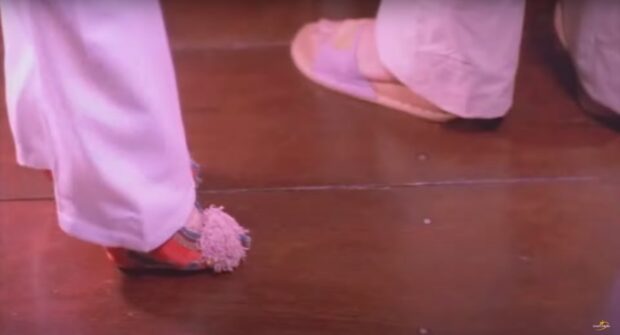In the early 2000s, it was nearly impossible to avoid the works of Chito Roño.
After taking screenwriting courses in New York and studying cinematography in Rome, he began in the documentary and experimental cinema department of the Manila Film Center before making a handful of provocative local works like his 1986 debut “Private Show.” He crossed over into the mainstream in 1992 and in just six years made a name for himself as a cinematic dilettante capable of helming any genre, introducing story after story to critical and commercial success, and directing actresses such as Lorna Tolentino to grand-slam-worthy performances.
The year 2002 was set to be a career milestone. He was hot off his previous year’s win for the war epic “Yamashita: The Tiger’s Treasure,” which won him not only the Best Picture Award but also his second Best Director Award at the Metro Manila Film Festival (MMFF)—a rare feat at the time achieved only by Eddie Garcia, Laurice Guillen, and Mario O’Hara, and National Artists Lino Brocka and Marilou Diaz-Abaya.
He was in the thick of directing two features for the 2002 MMFF. The first was “Spirit Warriors: The Shortcut,” a sequel to his successful fantasy adventure in 2000, set to be released alongside “Spirits”—a television prequel to “Spirit Warriors.” The second was a film adaptation of Lualhati Bautista’s celebrated political novel “Dekada ’70,” which reunited him with his “Bata, Bata… Pa’no Ka Ginawa?” (1998) collaborators Vilma Santos and Bautista, widely regarded as one of the most awaited Filipino films of the new millennium.
 “Feng Shui” boosted Kris Aquino’s name to scream queen status. Screenshot from ABS-CBN Star Cinema’s YouTube channel
“Feng Shui” boosted Kris Aquino’s name to scream queen status. Screenshot from ABS-CBN Star Cinema’s YouTube channel
To outsiders, it would seem that Roño’s life was only a collection of good fortunes. But on the last Friday of August 2002, Roño found out his father, former Samar governor Jose “Peping” Roño, died from pneumonia. Three and a half months later, just 10 days before the MMFF opened, his mother, Carolina Sarmiento Roño, joined his late father. Though “Dekada ’70” and “Spirit Warriors 2” won second and third best picture at the festival respectively, Roño couldn’t fully celebrate. After fulfilling his obligations of promoting both films, he went into creative hibernation due to grief.
In the coming months, Roño refused to direct anything, staying home instead to mourn, only occasionally working with the dance group Street Boys, which he co-founded a few years prior. In a newly empty household and in the absence of film work, he found himself writing and revising a story every day til 5 a.m.—one involving a family whose sudden wave of luck was met with equal misfortune. Whether Roño was aware of the parallels of this initial story to his own life, he brought it to friend and co-writer Roy C. Iglesias, who wrote “Dahas” (1995) and “Ang Babae sa Bintana” (1998), and later Star Cinema, who produced a number of his films including “Dekada ’70” and “Separada” (1994).
However at this point, the production company had only made two other horror films in the decade since they’d been founded—a remake of Celso Ad Castillo’s “Patayin sa Sindak si Barbara” in 1995 directed by Roño and a horror anthology “Magandang Hatinggabi” directed by Laurenti Dyogi in 1998.
While both were commercially successful, such fare was far from Star Cinema’s usual niche of family-friendly movies, romantic dramas, and action films, and closer to the works produced by Regal Entertainment, headed by Roño’s friend and collaborator Mother Lily Monteverde. When Roño brought in the script, Star Cinema immediately greenlit the project, arguing only for a title change, apprehensive that the audience wouldn’t connect to the foreign title. Roño insisted they keep the title, confident that it would stick.
Twenty years and a sequel later, that project, “Feng Shui,” has become a benchmark for horror films in the Philippines and inadvertently branded Roño as a horror director.
 The infamous bagua. Screenshot from ABS-CBN Star Cinema’s YouTube channel
The infamous bagua. Screenshot from ABS-CBN Star Cinema’s YouTube channel
Structuring the story, finding a lead
The film follows Joy (Kris Aquino), a woman struggling to make a new home for her family, who picks up a mysterious mirror left by a stranger on the bus. Soon after hanging this bagua above her doorstep, luck begins to flood her home—filling her life with bonuses at work, wins at supermarket raffles, and sudden inheritances. But when a sudden string of deaths clues her in on something more insidious, Joy realizes that it may not only be threatening her life but also her family.
“Feng Shui” arrived when Asian horror began sweeping the international box office with films like “Ringu,” “Ju-on: The Grudge,” “Dark Water,” and “Shutter.” While these features wrestled with the digital revolution in their respective countries, “Feng Shui” centers around an item rooted in Chinese tradition—the bagua.
“Before I started writing, Star Cinema gave me a thick [compilation] of research materials on baguas, which I was unable to read,” says Iglesias, laughing. “Wala na eh. Too late na eh. But I didn’t find anything about the bagua associated with death. We just invented it.”
Neither Roño nor Iglesias can pinpoint where the idea to use the bagua came from but both had been fascinated with the idea of inverting the luck it promised. “What if dumating lahat ng swerte pero may kapalit na malas? Anong pipiliin mo: ’yung swerte o malas?” asks Roño. “Pinagdadasal mo ang swerte araw-araw. Kapag dumating na, mabibitawan mo ba talaga? You cannot be swerte forever. It only looks like that from the outside.”
Familial disintegration and the costs of infidelity are key to “Feng Shui”’s effectivity as a domestic horror and supernatural home invasion. Joy’s efforts to keep her family together create the rift that the bagua takes advantage of filling. “Roy did wonderful things to the characters,” says Roño of Iglesias, whose prior work contains these same themes, including the multicultural exploration of identity and influence that defines the push and pull often of his Chinese-Filipino characters.
“When writing it, I was not so conscious about the structure. I was just going with the characters and the feeling you could draw from the situation,” says Iglesias. “I knew I shouldn’t go out of the problems of the family. It needed to be family-oriented. There was no conscious effort to make these parallels.”
“Feng Shui” is most remembered for how the Chinese zodiac predicts or dictates the manner of a character’s death, which Roño and Iglesias had only come up with on their own. The film gradually becomes a guessing game of how one can die, armed with the knowledge of one’s birth chart.
“The deaths were the easy part [to write]. The challenge was how do you introduce the Chinese sign?” says Iglesias. Comparisons have been drawn to James Wong’s “Final Destination 3” (2006), which arrives two years after “Feng Shui” was released and depicts death as an invisible force operating a cruel Rube Goldberg machine, with photographs used by characters as clues to “beat” death. But Roño and Iglesias create a distinction between the two projects: Death was unavoidable, but luck could be denied.
“Feng Shui” was first offered to Judy Ann Santos, who Roño worked with on “Nasaan ang Puso?” (1998). However, as Aquino revealed in a 2014 press conference for “Feng Shui 2,” Santos’ management declined the role. While Aquino was the lead in “The Fatima Buen Story” and had supporting roles in a string of crime dramas, she was known more as a television host.
“Kris, at the time, was not a movie star. She was not the Kris Aquino we know today. It was very easy to get her,” says Roño. “She was very cooperative. Kahit mag-take seven kayo, she’ll still do it… wala akong pinagsisihan [in getting her].”
Iglesias recalls that Aquino approached him at the wake of a common friend to tell him she loved “Feng Shui”’s script. “Feng Shui” was her first lead in a horror film and later launched her as one of the country’s most iconic and sought-after contemporary scream queens. “We had this theory that it became a hit because people really wanted to see Kris get scared,” says Iglesias.
Aquino’s involvement changed only a handful of details about the film. The first was the involvement of several brands, many of which Aquino had been endorsing. Shortly after discovering the bagua and before any of the film’s major deaths, Joy cooks a can of Chunkee corned beef for her family. “Pinilit lang ako noon. I was trying to keep a straight face while the agency suggested ways of doing the scene,” laughs Roño, cringing as he recalls the scene. Product integration was more commonplace in commercial Filipino films from the early 2000s to late 2010s, but companies preferred films with love teams and opportunities to situate brands in positive contexts. “Feng Shui” has become a rare but prominent example of unsubtle product placement in Filipino horror films; one that has only grown camp as the years have passed. Even then, Roño was aware of its absurdity: “Nakakatawa kasi luto lang nang luto si Kris tapos pagka-cut namin, tawa kami nang tawa.”
The second was Joy’s employment. Roño and Iglesias had written that Joy would have a job but had not fully detailed the workings of her profession. Aquino suggested that the character be involved in a multilevel marketing business, which had boomed in the early 2000s along with other pyramid scams. Aquino recommended studies from a handful of local businesses, which added specificity to the character’s day-to-day life. The suggestions made sense to Iglesias: “Mas madali ’yung swerte doon. Ano pa bang profession ang pwede niyang pasukan na malapit sa swerte? Ang madalas mangyari, nasa lotto. Pero dito, mas malapit siya sa financial windfall.”
“Feng Shui” is an unexpectedly clear-eyed cultural sketch of 2004. Embedded into the film’s narrative and atmosphere are the anxieties around death caused by the 2003 local SARS outbreak and the economic tailspin stemming from the budget deficit and debt crisis from Gloria Macapagal-Arroyo’s previous term, which was also partly responsible for the boom of migration to Canada. The aspiration for financial stability arrived at the advent of Arroyo’s re-election, who promised financial gain to families during her first SONA. This focus on luck isn’t too far from our present day. Despite being two decades old, “Feng Shui” is prescient in observing how uncertainty creates a society increasingly dependent on mysticism and different forms of fortune-telling, now mediated by the internet and social media.
Designing the horror
Assembling the creative team for “Feng Shui” wasn’t a difficult affair. Editor Vito Cajili and director of photography Neil Daza had been long-time collaborators of Roño, with the latter being one of the first people Roño contacted about how he wanted the project to look. “Sinabi kong kung gagawa ako ng horror, ayaw ko ng creepy, dark, and moody. Gusto ko bright and cheerful!” says Roño, laughing.
He discovered composer Carmina Cuya from television when she was hired to score “Spirits” and asked her to create the low thrums and eerie score that made every scene in the film tense: “She did more than ‘Feng Shui,’ but it’s probably her best work in a movie.”
At the request of Roño, production designer Raymond Bajarias filled the interiors with not just contradictory religious paraphernalia and folkloric traditions but also “positive” colors that would reflect the family’s desire for a fresh start. ”Pinuno niya ’yung bahay ng mga fuschia, mga blue, mga green,” says Roño.
The setting of the film—a new house in a near-empty subdivision in Cainta, Rizal—embodied the film’s themes as the location exists at the border of rural and urban, traditional and modern, highly religious and deeply superstitious. Roño recalls shooting the film in Imus, Cavite in a house for sale that Roño, Bajarias, and his team only fixed up.
“It was almost non-functioning,” says Roño. “Talagang ikot kami nang ikot. Bagong village. Di pa tapos. It was being constructed literally. It’s going up. Kung ikaw ’yung character ni Kris, dream come true mo na lumayo ka sa bahay sa mother-in-law.” The new location presented possibility and the neighbors’ absence emphasized the loneliness and lack of support. Roño later populates the inside of the household with ghosts that displace Joy, her husband Inton, and her kids Denton and Ingrid—an image that physicalizes the dissonance between the family’s experience of luck and outsiders’ perception of it.
The dread in the film slowly builds as Joy cannot deny the good news and Inton’s infidelity, culminating in one of the production’s most memorable sequences—the death of Joy’s close friend Alice, played by Lotlot De Leon. “It’s the first time we see the actual killing,” says Roño. Until this point, the audience, like Joy, only hears about the deaths once they’re over, a reflection of her transactional relationships with those who have died. The death of Alice had to make a mark as it depicts the indiscriminate nature of the curse and its penetration into Joy’s inner circle.
All the elements from the script were there, but Roño added visual flourishes after walking around the location. Alice was set to die after being hit with an ironing board (colloquially called kabayo) by a drunken man in her barangay. But Roño modified the scene after discovering a stack of bottles of Red Horse, some of which had been broken and grown sharp. “Yung beer na ‘yon? Hindi ‘yon amin. May tindahan talaga sa baba,” says Roño. “Sinabi ko: ‘Gamitin ko po ‘to’. It was not planned.” Roño uses the initial death planned as a red herring, instead of killing Alice by having her fall to her death, an image truer to the tarot card pulled moments before. Struck by the bustling evening milieu, Roño asked for another visual element: “Right then and there, sinabi ko kailangan ko ng kalesa.” He later uses this to punctuate the scene and explain Joy’s delayed arrival.
Iglesias only saw the Lotus Lady, commonly referred to by the public as “Lotus Feet,” onscreen during the premiere of “Feng Shui,” as Roño added her character during the production process. Dressed in traditional Chinese funeral garb, the Lotus Lady is devoid of color, with a cloak partially covering her head, making her reminiscent of a white lady and a religious figure. The lore crafted by Roño, also similarly pulled from what feels like nothing, roots her ghostly existence in a desire for retribution after being abandoned during the fall of imperial China. “There was a need to personify the evil,” says Iglesias. “You needed to personify that death.”
The woman who plays the Lotus Lady, Rosie Salco, was previously in Roño’s “Ang Babae sa Bintana” (1998) as a Ko-Kah opera dancer. Roño cannot recall the exact inspirations behind the Lotus Lady nor when this decision to introduce her was made during production. But he could trace his fears of it back to an incident in his grade school days: when a stroll with his family was interrupted by the wails of a woman being carried out of a restaurant in Sta. Cruz, her legs flailing in the air, her tiny feet unable to bear the weight of her body after being bound in lotus shoes.
 Lotus Feet. Screenshot from ABS-CBN Star Cinema’s YouTube channel
Lotus Feet. Screenshot from ABS-CBN Star Cinema’s YouTube channel
Personal legacies
Roño’s personal experiences litter the details of his cinema. Along with the Lotus Lady, the scene where the basketball disappears into the ceiling comes from one of Roño’s nightmares. Iglesias thinks these additions and improvisations created a better film altogether. “Minsan, kapag sinulat ko, to me it’s just an ordinary sequence. But when I see it on film, it works. What was added only enhanced everything in the original script,” says Iglesias. “It’s in the way Chito does the scene. There’s a particular atmosphere he creates. It’s just so difficult to see what would make a successful horror film on paper… He’s one of those filmmakers na hindi umaatras. He welcomes the challenge of the script.”
Such improvisations and experimentations are more difficult now as production budgets get tighter and rules around filmmaking and distribution become stricter and more complicated with second-screen approval. Beyond such creative restrictions, one wonders if it would still be possible to create a “Feng Shui” now given the shift in the audience away from the supernatural and local towards the digital and universal, despite a significant portion of the Filipino population still believing in the superstitions and folklore.
“I was approached by a producer [to create] a horror for a European streaming platform. But the horror that we’re doing here, they laugh at it eh? Because they don’t believe in ghosts [like we do],” says Iglesias. “Though I may not believe in superstitions, I’m exposed to it in our culture and nagamit ko ’yun.”
Roño agrees that replicating “Feng Shui” now seems impossible but also because it was tied to his process of grieving his parents. “‘Feng Shui’ came from something very sad. To while my time away, sumulat lang ako. Isa lang ang parents mo eh. It won’t happen again,” says Roño. “It came from a traumatic experience and writing was one of my consolations to make it worthwhile.”
While Roño is grateful for the enormity of “Feng Shui”’s supposed cultural impactaw8, he is more interested in the new stories that must be told: “When I do a film, I don’t think much about it after it’s shown. It should have a life of its own. Mas gusto ko pa ‘yon,” says Roño. “I don’t want to be influenced by just one project. I want to be inspired by the next one. I’m happy na may legacy ang ‘Feng Shui,’ pero tapos na ako doon. I am happy with what I did. That’s enough for me.”

